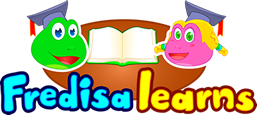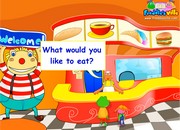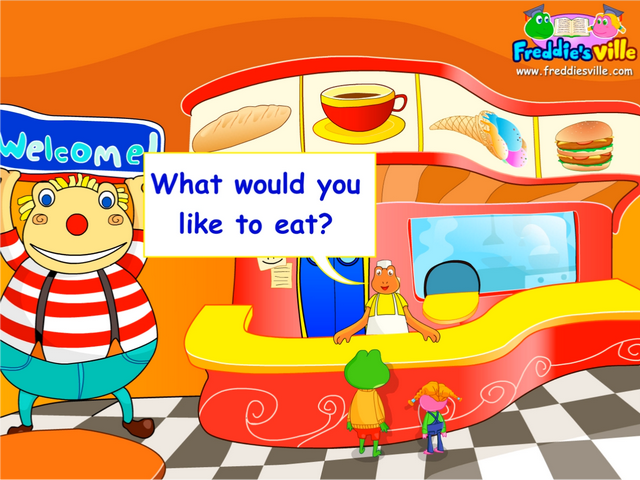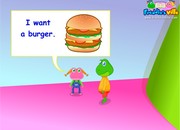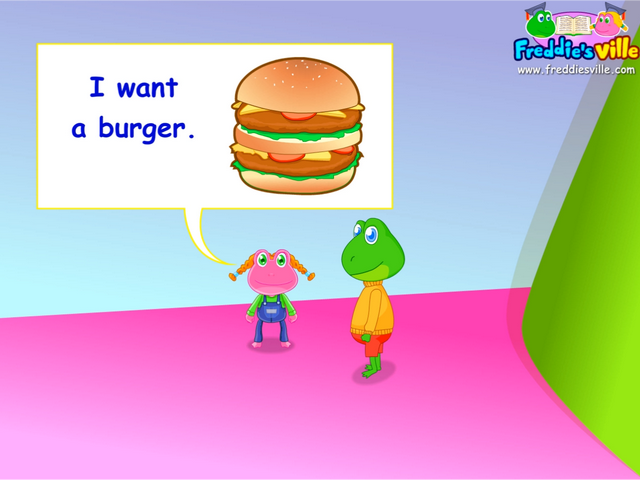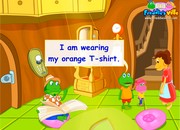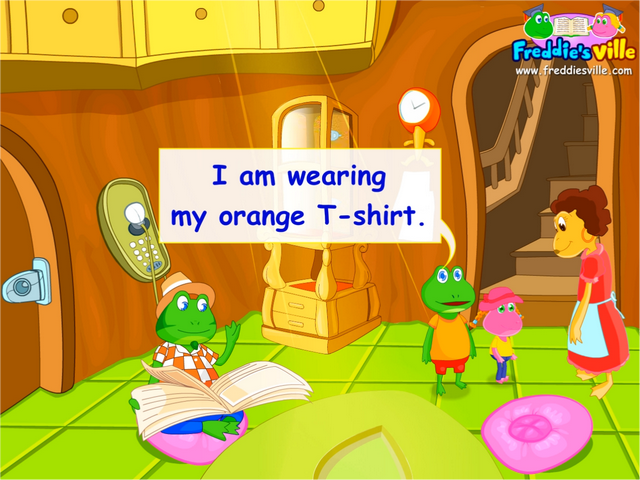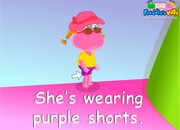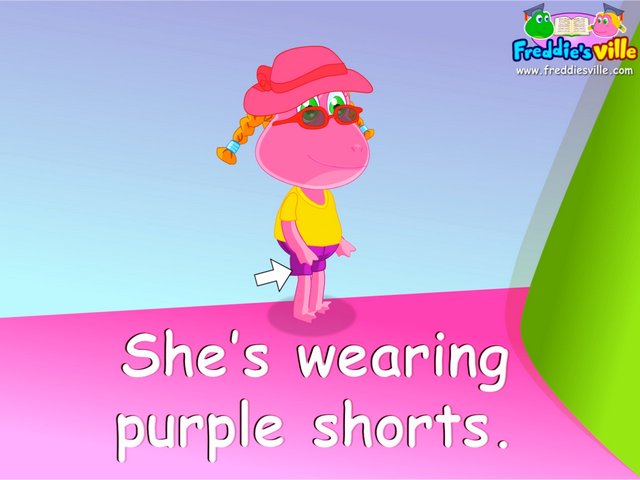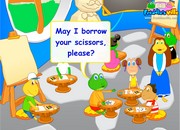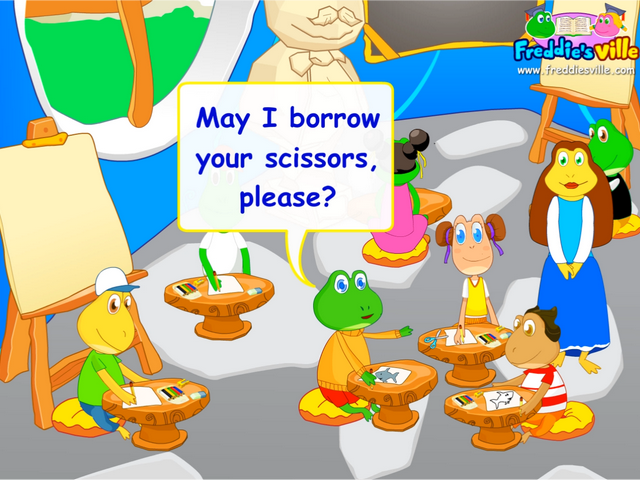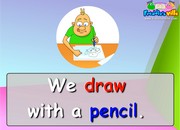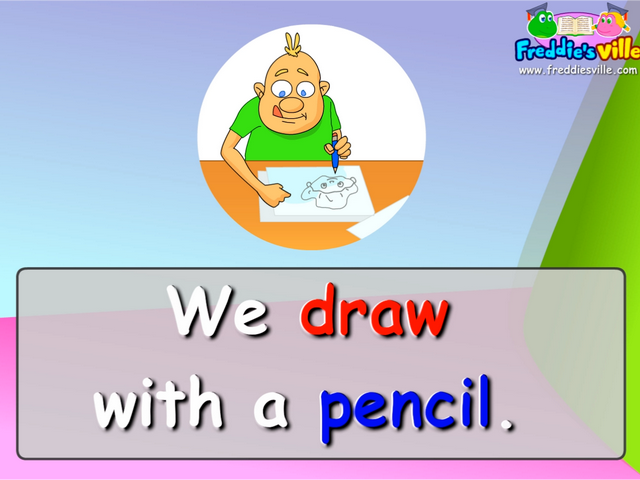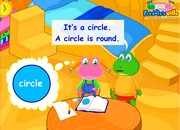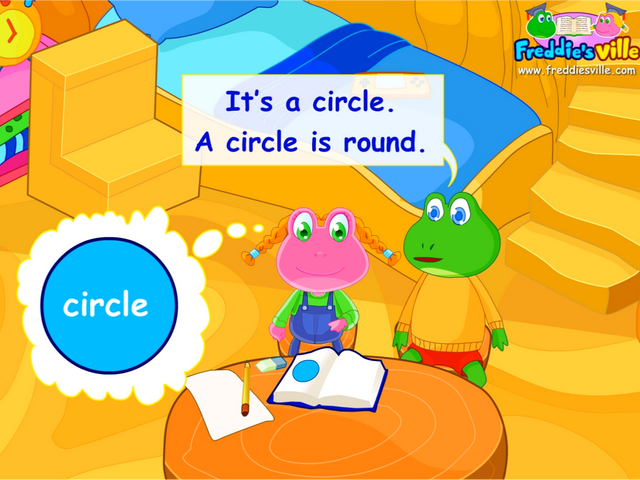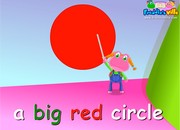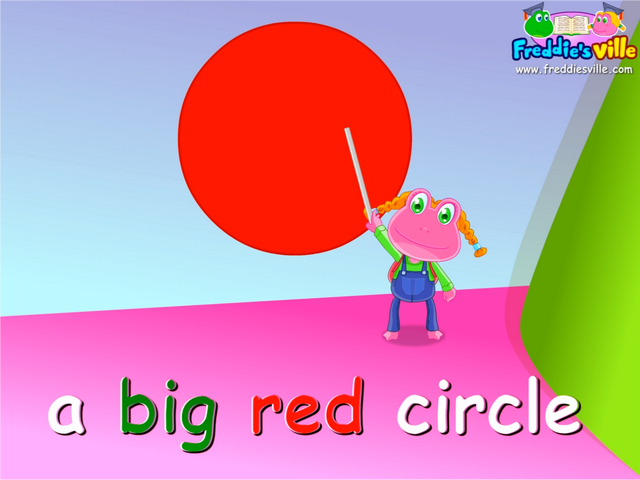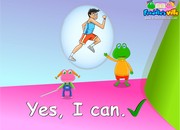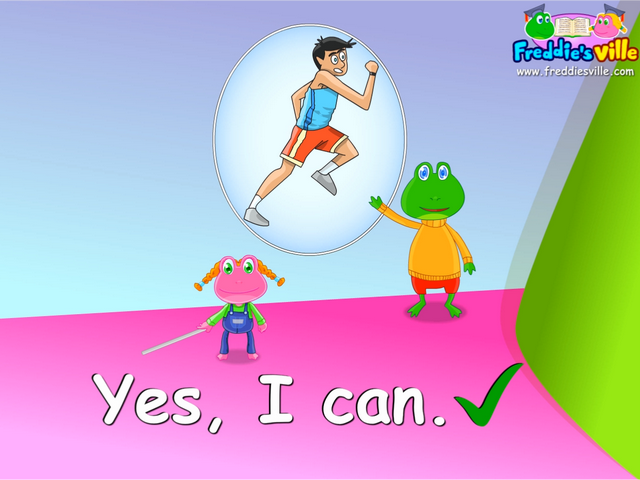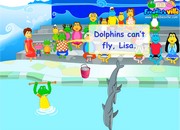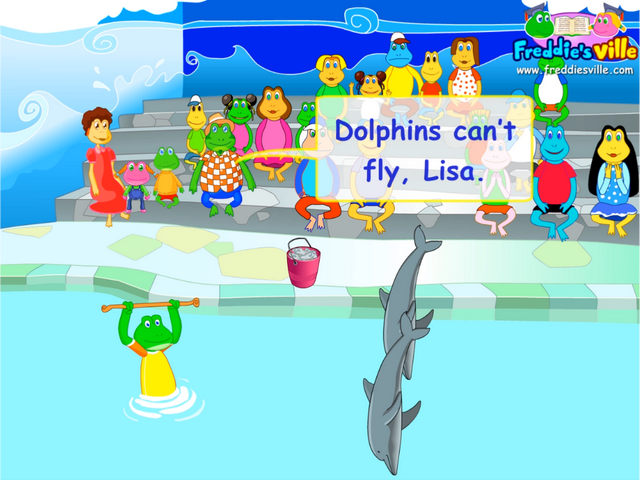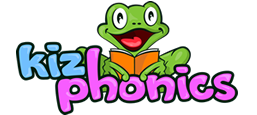Food & Drinks Lesson
- Topic: Food & Drinks Lesson Dialogue
- Communication Objectives: The goal of this lesson is to teach English learners how to order food in a restaurant and to express want.
- Language Objectives: To learn to use the expressions ‘I want’ and ‘I would like’ to make a request. The lesson will focus on food and drinks vocabulary. The lesson will also teach students to use the modal verb ‘would’ to make a polite request.
- Dialogue Story: Freddie and Lisa are out playing at a park. Lisa feels hungry and they decide to grab a bite. A conversation about food begins in the fast food restaurant.
- Sentence Structures:
- I’m starving.
- Let’s get something to eat.
- What would you like to eat?
- I’d like an ice cream and a burger.
- I’d like a glass of coke, please.
This lesson has a related vocabulary video. Click here to watch the vocabulary and grammar break down of this lesson.
